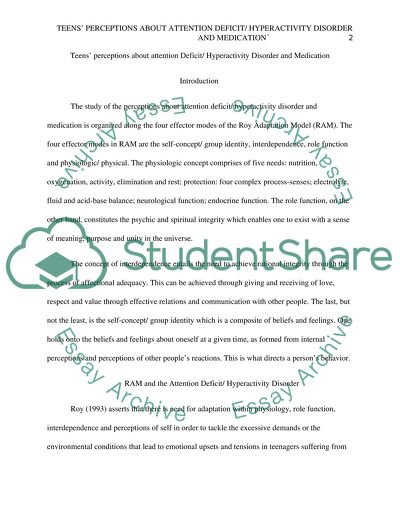Teens perceptions about attention Deficit/Hyperactivity Disorder and Essay. Retrieved from https://studentshare.org/nursing/1494894-teens-perceptions-about-attention-deficit
Teens Perceptions about Attention Deficit/Hyperactivity Disorder and Essay. https://studentshare.org/nursing/1494894-teens-perceptions-about-attention-deficit.


